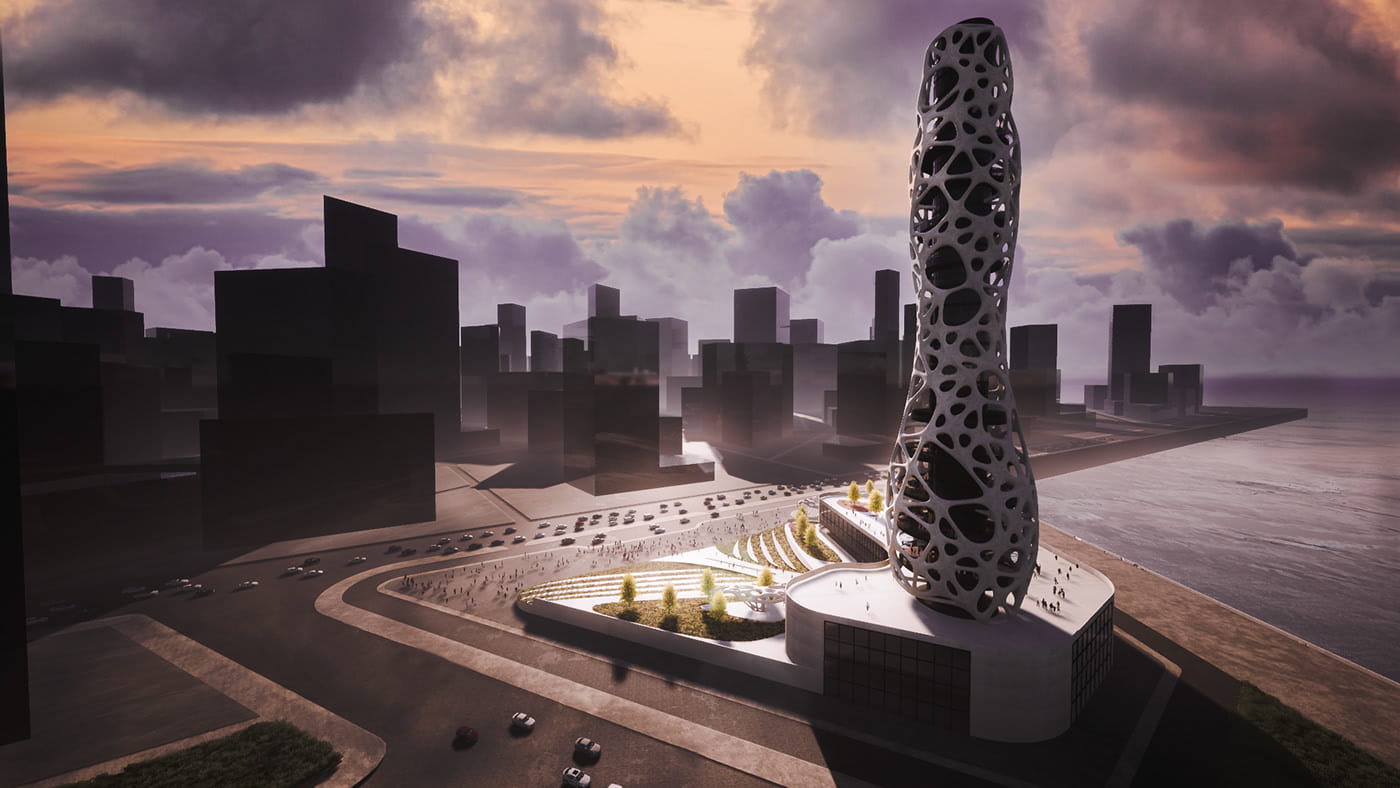7 Best Career Roles in Computational Design for Architects and Engineers

Table of Contents
Two decades ago, the advent of AutoCAD digitalized drafting which empowered architects and engineers to produce error-free designs. It revolutionized design thinking and provided more scope for creativity. With further advancements in technology, more holistic tools under the umbrella of computational design are coming into the picture. New-age processes such as parametric modeling and generative design are now allowing professionals to ideate, create, and execute their designs through tech-driven tools.
How is Computational Design Benefitting AEC Professionals?

Computational design is enabling architects and engineers to improve their work and stay competitive in an ever-changing marketplace. It allows them to automate manual and repetitive tasks, thereby reducing the time and effort required to complete projects. Computational design methods also improve accuracy by enabling professionals to perform complex calculations and simulations quickly and accurately, reducing errors and improving the quality of designs. Additionally, computational design software allows all project stakeholders to collaborate in real-time, improving communication and coordination among team members.
Top Career Roles in Computational Design
Computational Design is a diverse field of work comprising multiple job opportunities. An architect or engineer can discover their area of liking and expertise to join any one of the professional leagues mentioned below.
Parametric Designer
Who is a Parametric Designer?
A Parametric Designer is a professional who specializes in using parametric modeling softwares and techniques to create and manage complex design solutions. Grasshopper and Rhino are the most widely used parametric modeling tools. A parametric designer creates designs that can be easily modified and adapted based on specified parameters, such as dimensions, materials, or functional requirements.
The primary responsibilities of a Parametric Designer include:
- Developing and managing parametric models for a wide range of design projects, such as architectural, product, or mechanical designs
- Creating and refining parametric relationships and rules to ensure that designs can be easily modified and adapted
- Collaborating with designers, engineers, and other stakeholders to ensure that parametric models meet project requirements
- Using parametric design software to create detailed drawings, simulations, and prototypes of designs
- Conducting performance analysis and optimization of designs based on specific requirements

Immersive 3D Designer
Who is an Immersive 3D Designer?
An Immersive 3D Designer is a professional who specializes in creating 3D environments and experiences using virtual and augmented reality technologies. This can include designing virtual and augmented reality applications, video games, and other immersive digital experiences.
The primary responsibilities of an Immersive 3D Designer include:
- Creating 3D models, animations, and environments for use in virtual and augmented reality experiences
- Designing and integrating interactive elements, such as user interfaces, into immersive experiences
- Collaborating with other designers, engineers, and stakeholders to ensure that immersive experiences meet project requirements
- Using game engines, 3D modeling software, and other tools to create and refine immersive experiences
- Conducting user testing and user research to evaluate and improve the usability and effectiveness of immersive experiences
Computational Design Specialist
Who is a Computational Design Specialist?
A Computational Design Specialist is a professional who specializes in using advanced computer algorithms, simulations, and programming techniques to create and manage design solutions. They use computational design methods to analyze, optimize, and automate complex design problems, and to create designs that are more efficient, sustainable, and adaptable than those created using traditional methods.
The primary responsibilities of a Computational Design Specialist include:
- Developing and using algorithms, simulations, and other computational methods to analyze, optimize, and automate design problems
- Collaborating with designers, engineers, and other stakeholders to ensure that computational design solutions meet project requirements
- Conducting performance analysis and optimization of designs based on specific requirements
- Developing custom software and tools to support the design process and automate repetitive tasks
Design Technology Specialist
Who is a Design Technology Specialist?
A Design Technology Specialist is a professional who specializes in using technology to support and enhance the design process. They work closely with designers, engineers, and other stakeholders to integrate new technologies and workflows into the design process, and to improve the efficiency, accuracy, and effectiveness of design activities.
Read: Exploring a Career in BIM and Computational Design with Ami Nigam
Scope of WorkThe primary responsibilities of a Design Technology Specialist include:
- Evaluating and selecting design technology tools and software to support the design process
- Developing and implementing design technology workflows and processes using algorithms
- Providing training and support to designers and engineers on design technology tools and workflows
- Collaborating with designers and engineers to integrate technology into the design process
- Conducting research and development on new design technology tools and techniques

Building Performance Analyst
Who is a Building Performance Analyst?
A Building Performance Analyst is a professional who specializes in evaluating the performance of buildings and making recommendations for improving energy efficiency, sustainability, and overall functionality. They use advanced computer simulations and modeling techniques to analyze the energy consumption, thermal comfort, indoor air quality, and lighting conditions of buildings.
The primary responsibilities of a Building Performance Analyst include:
- Collecting and analyzing data on building design, construction, and operation
- Developing and running computer simulations to evaluate building performance
- Identifying areas for improvement and making recommendations to optimize energy efficiency, sustainability, and overall functionality
- Working with designers, engineers, and contractors to integrate performance-enhancing solutions into building designs
- Conducting post-occupancy evaluations to assess the performance of buildings in real-world conditions
Building Sustainability Consultant
Who is a Building Sustainability Consultant?
A Building Sustainability Consultant is a professional who specializes in advising building owners and designers on how to create sustainable and environmentally friendly buildings. They help organizations achieve sustainable design goals by providing expert advice on building materials, energy efficiency, indoor environmental quality, and other sustainability-related issues.
Read: Building a Career in Sustainable Architecture
Scope of WorkThe primary responsibilities of a Building Sustainability Consultant include:
- Conducting sustainability assessments and energy audits of existing buildings to identify opportunities for improvement
- Advising building owners and designers on sustainable design strategies, materials, and technologies
- Evaluating building systems and design proposals to ensure that they meet sustainability goals and regulations
- Assisting with the preparation of sustainability-related reports, such as sustainability certificates and environmental impact assessments

BIM Specialist
Who is a BIM Specialist?
A BIM (Building Information Modeling) Specialist is a professional who specializes in using BIM software and technologies to support the design, construction, and operation of buildings. They are responsible for creating, managing, and maintaining digital models of buildings, which can be used for a variety of purposes, including visualization, collaboration, construction planning, and facility management.
Scope of Work
The primary responsibilities of a BIM Specialist include:
- Creating and maintaining BIM models, including architectural, structural, MEP (mechanical, electrical, plumbing), and construction models
- Ensuring that the BIM models are accurate, consistent, and up-to-date
- Collaborating with design and construction teams to ensure the BIM models accurately reflect project requirements
- Generating construction documents, schedules, and cost estimates from the BIM models
- Using BIM to conduct clash detection, quantity take-offs, and other construction-related tasks
- Assisting with the coordination and communication of project information between stakeholders
Check this out:
In Conclusion
Computational design is becoming a real game changer for the AEC industry. It is enabling the creation of a holistic built environment through technologically streamlined processes. It is undoubtedly the future of the AEC industry and it is therefore essential for professionals to understand and get acquainted with computational design tools.
To help you achieve that, Novatr brings you an industry-relevant course on Computational Design. Understand computational theory, master advanced tools and industry workflows, build your specialization, and graduate with a professional certification by enrolling in this course.
Explore Novatr’s Master Computational Design Course today.

 Thanks for connecting!
Thanks for connecting!

-1.png)
-3.png?width=767&height=168&name=MCD%20B%20(Course%20Banner)-3.png)



.png)



.jpg)
.jpg)

